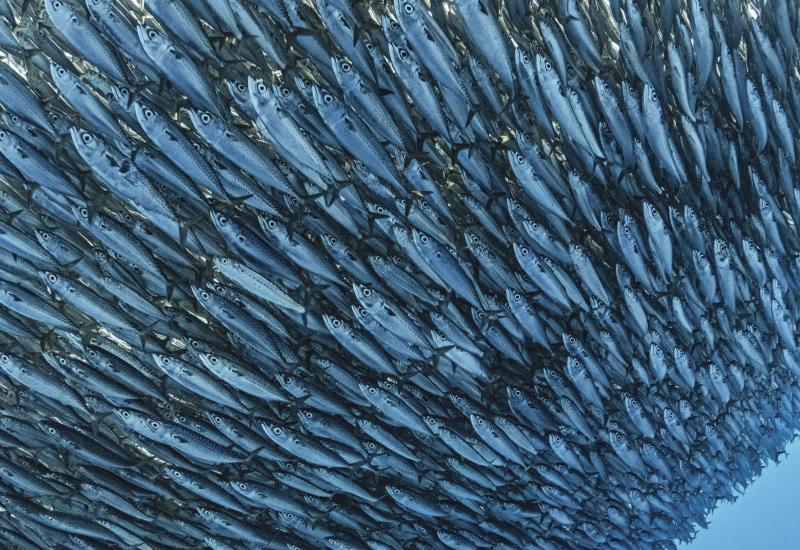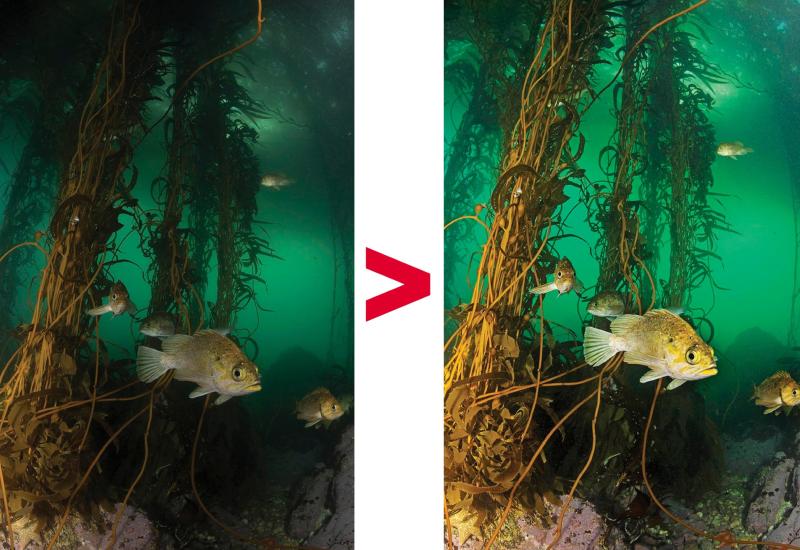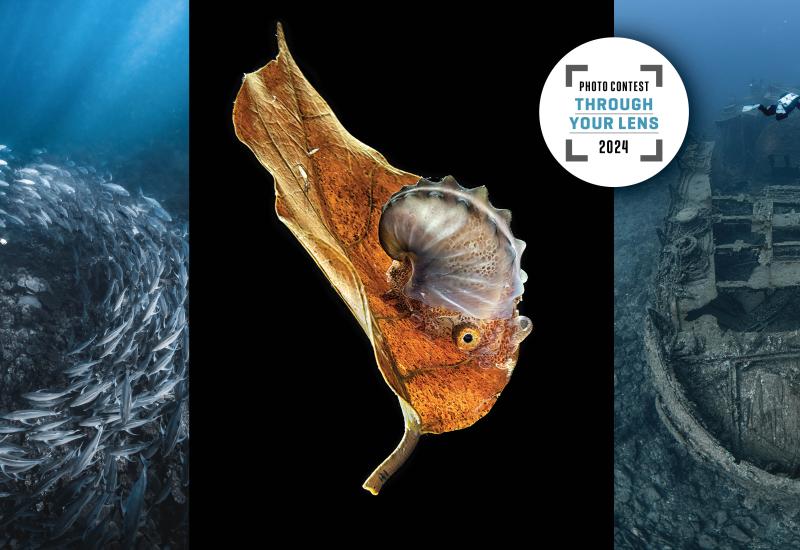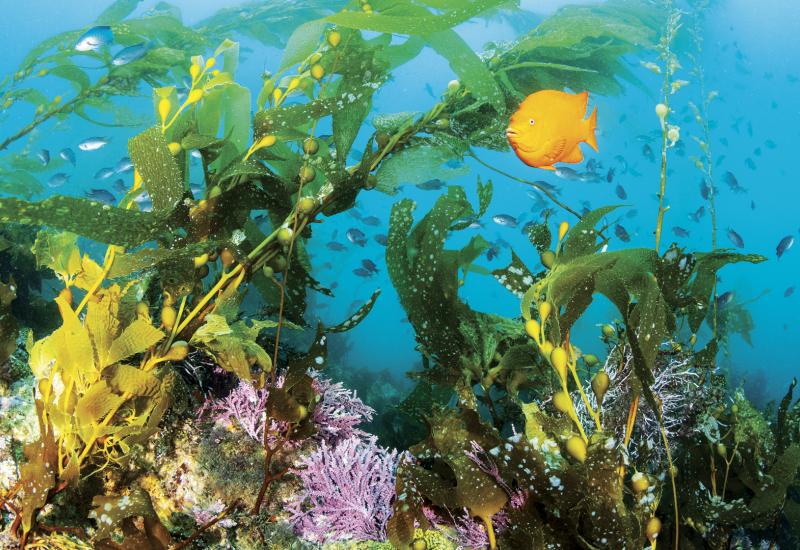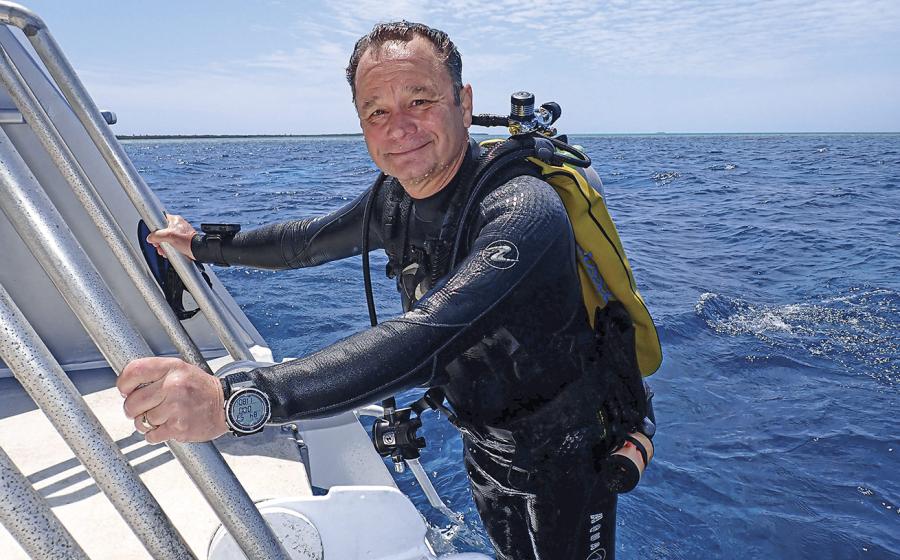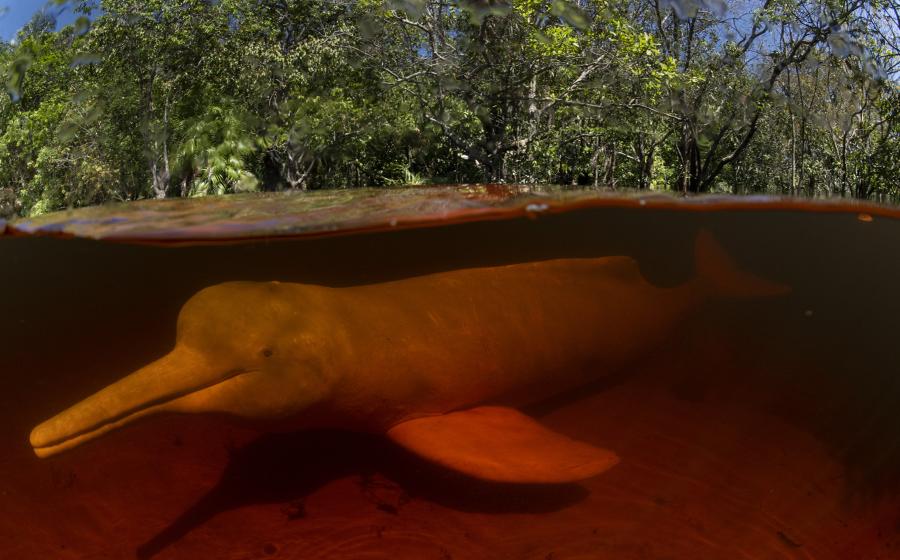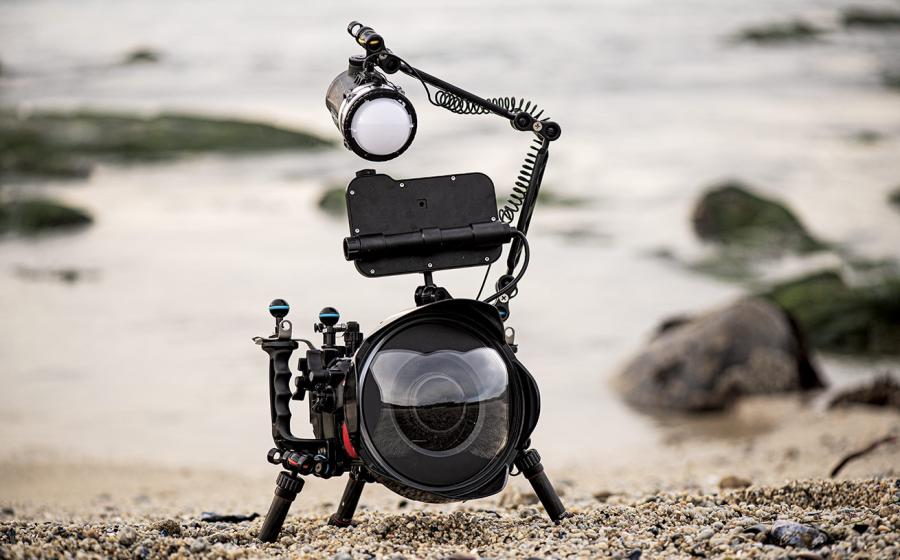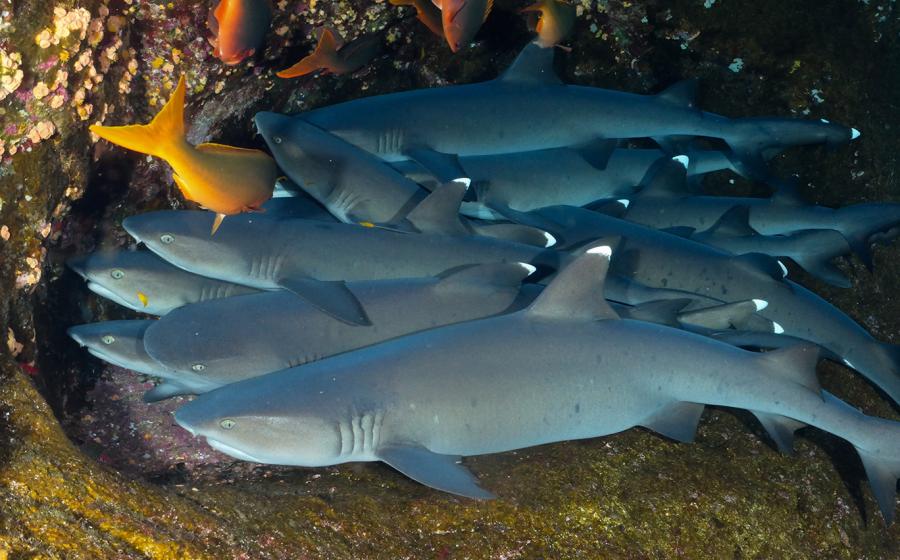11 Weird Animal Behaviors
Have you ever seen a shrimp that glows in the dark? What about a remora suctioned to a manta ray? Here are 11 of the weirdest ocean animal behaviors to look out for on your next dive:
1. Parrotfish Mucus Cocoons
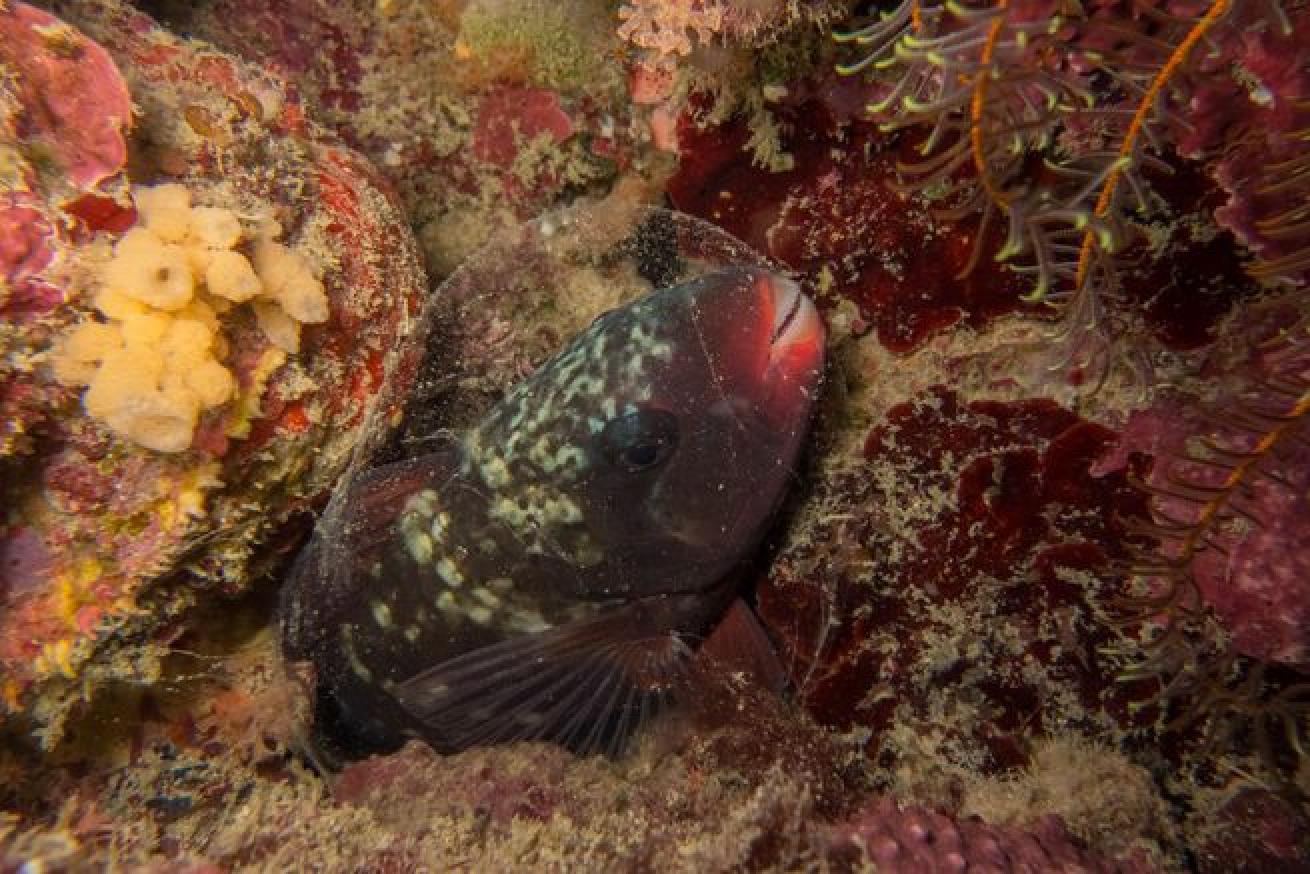
Shutterstock.com/Tidewater TeddyBullethead parrotfish (Chlorurus sordidus) sleeping inside a mucus cocoon on the Great Barrier Reef.
Before they go to sleep, parrotfish surround themselves in a cocoon of mucus. This helps them mask their scent to avoid predation, plus it helps keep parasites at bay while they lie sedentary for the night.
2. Jawfish Mouthbrooding
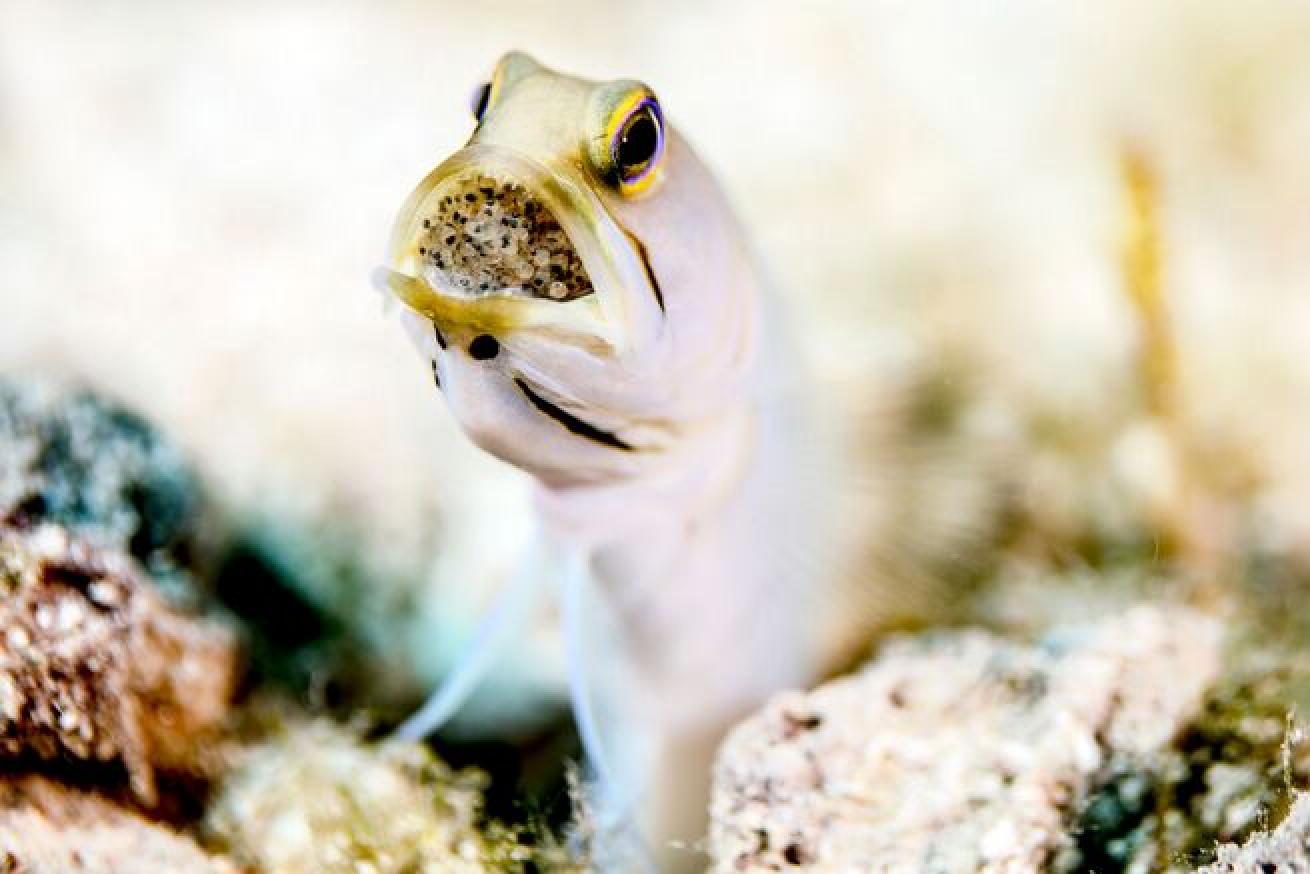
Shutterstock.com/Lindsey LuMouthbrooding male jawfish in the Caribbean. By Lindsey Lu
Yellow-headed jawfish are one of several species of fish that are mouthbrooders, meaning they incubate their eggs in their mouths. Periodically, they spit out the entire egg mass to clean it and keep it hydrated.
3. Tongue-Eating Parasite

Shutterstock.com/Mike WorkmanClownfish with three parasites in its mouth.
One of the weirder symbiotic relationships in the ocean, a small parasitic isopod called the tongue-eating louse crawls into a fish’s mouth through its gills, then eats and replaces the fish’s tongue.
4. Bumphead Parrotfish Ram Coral
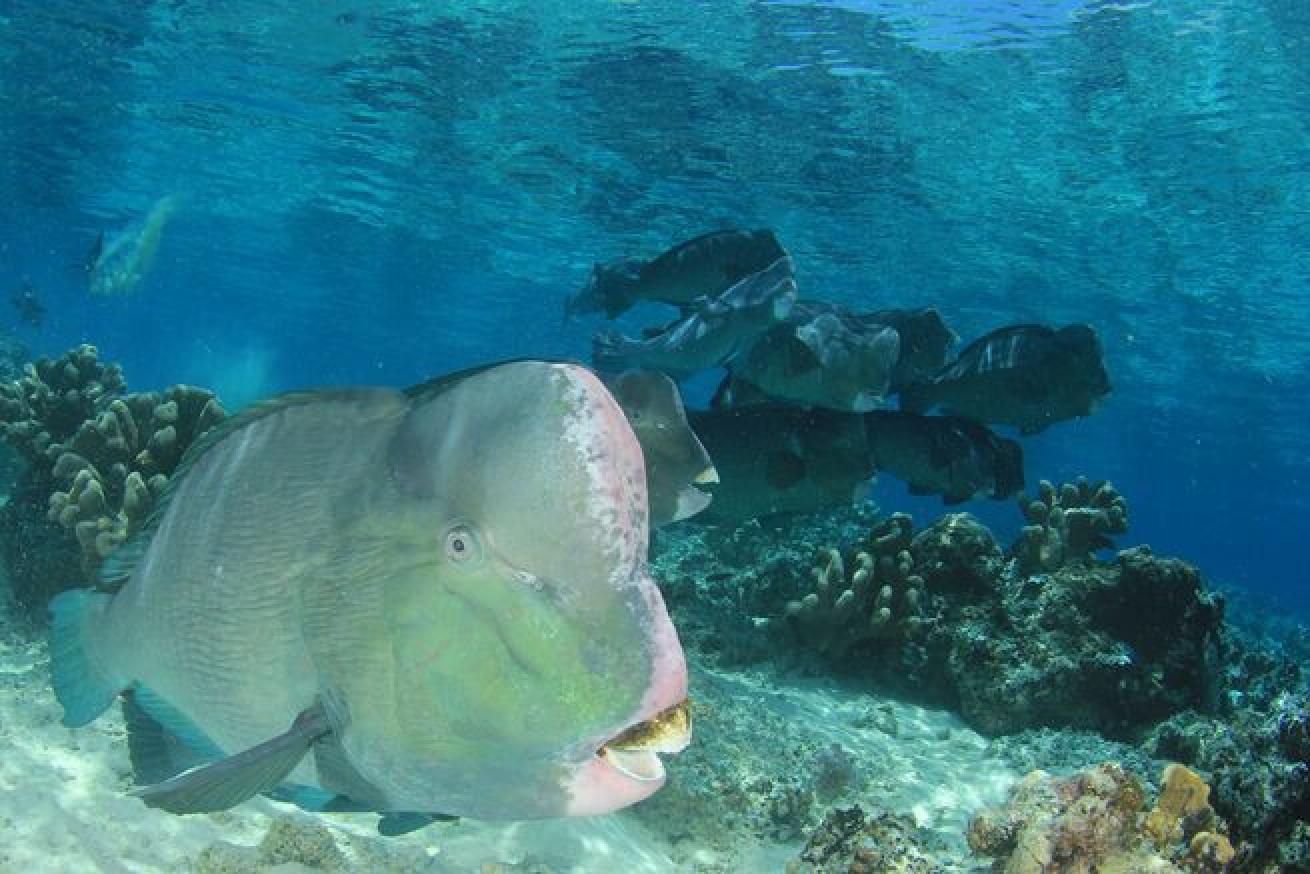
Shutterstock.com/Rich CareyBumphead parrotfish on coral reef.
Bumphead parrotfish get their names from their odd feeding behaviors. They use their massive heads to “bump” into coral, breaking off small pieces that are easier to digest.
5. Remoras Riding on Megafauna

Shutterstock.com/Pete NiesenCloseup of nurse shark and two parasite remora fish swimming along top and side.
Remoras are nothing if not opportunistic. Also known as “suckerfish,” this species is often seen hitching a ride on marine megafauna like sharks and rays. The fish attach to their hosts’ bodies and feed on their food scraps, occasionally repaying the favor by cleaning off parasites.
Related Reading: Top Editing Software and Tools for Underwater Photographers
6. Octopuses Super Eyeballs
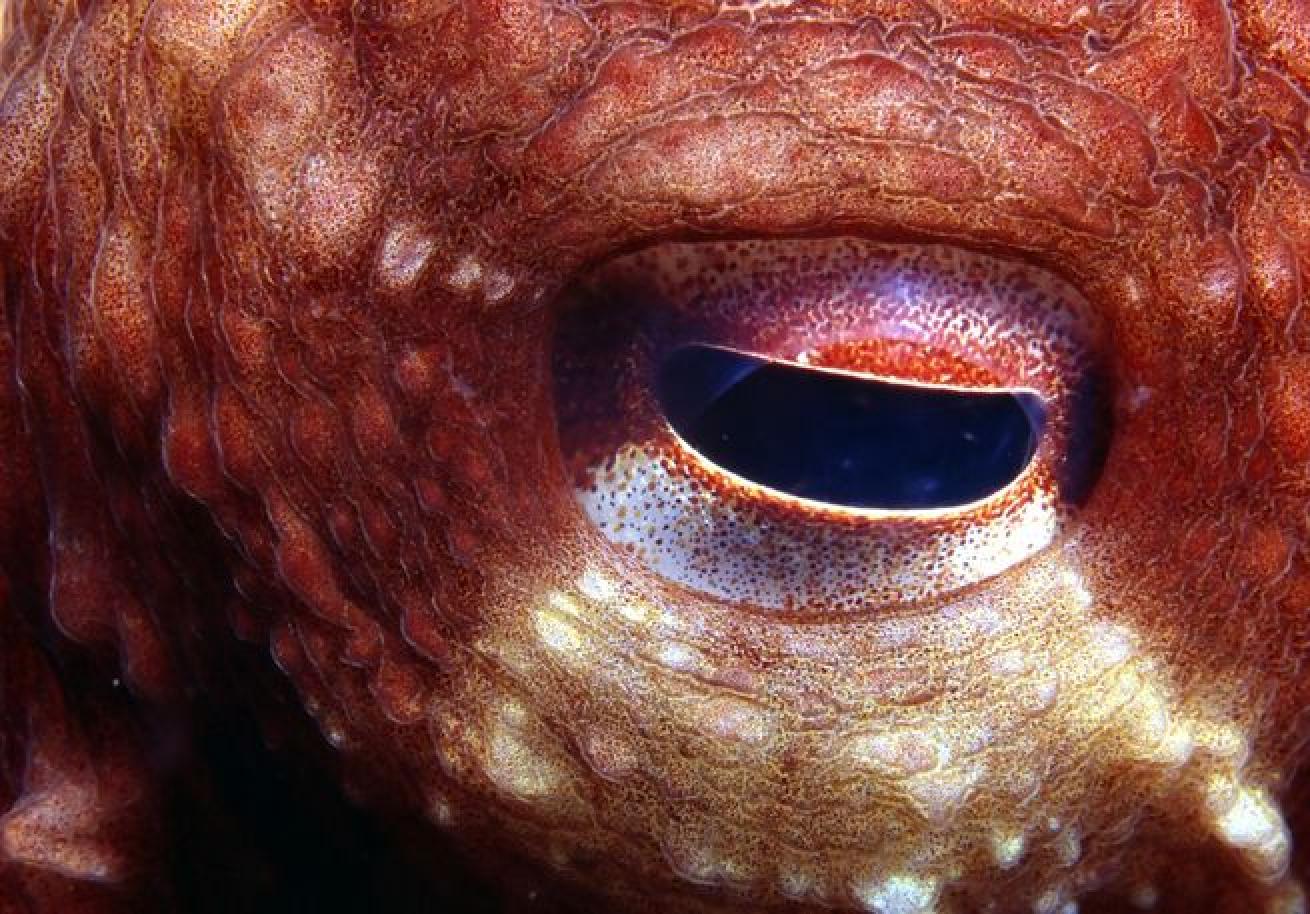
Shutterstock.com/Kerry L. WerryClose-up of an Octopus eyeball.
Octopuses are colorblind but use their uniquely shaped pupils to separate wavelengths. By adjusting the depth of their eyeballs, they can focus on any wavelength individually.
7. Parrotfish Poop Sand
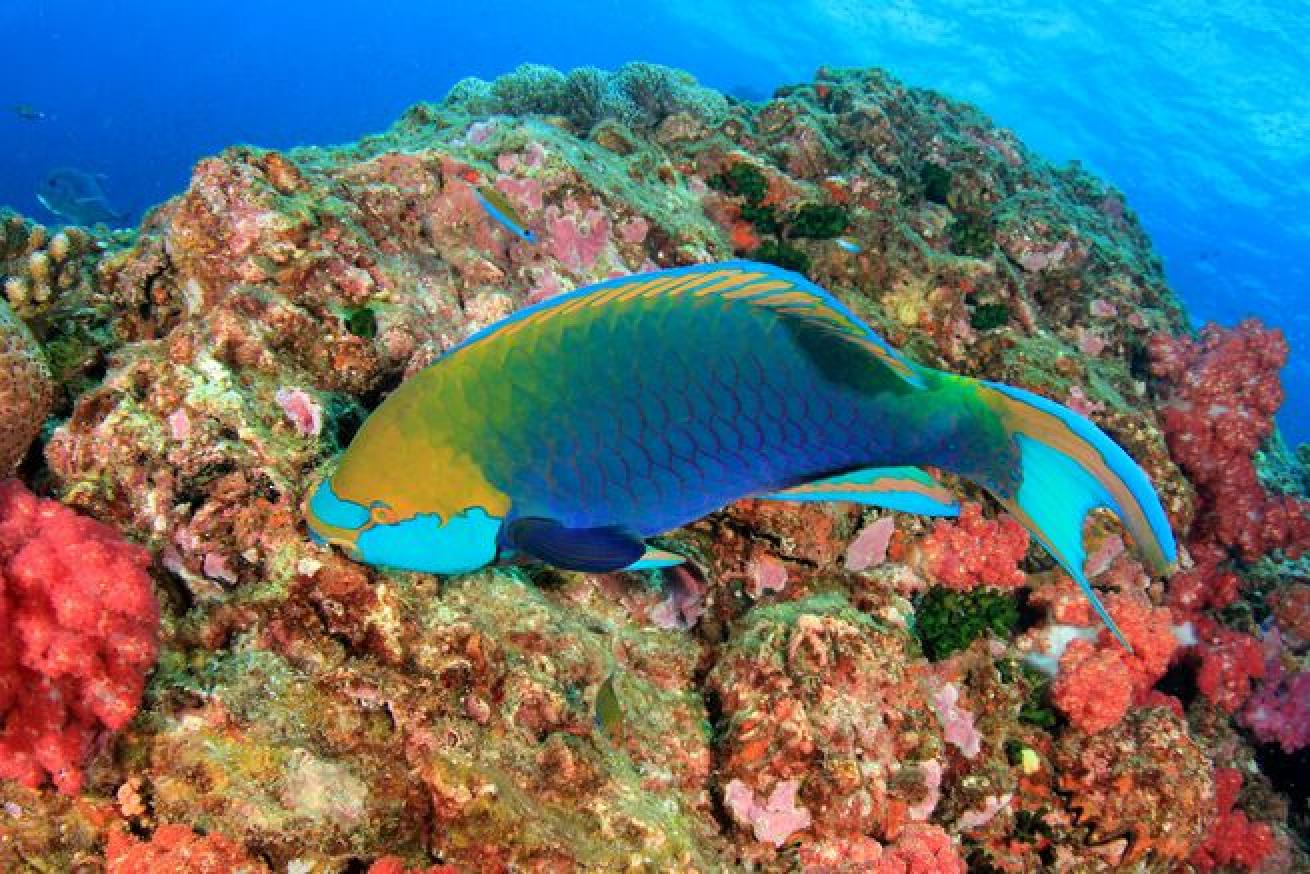
Shutterstock.com/Rich CareyParrotfish using its beak to eat hard coral.
You can thank parrotfish for our white sandy beaches. These fish use their large beaks to eat hard coral, and after they’ve digested, they secrete the ground-up coral as sand. In fact, one parrotfish can create up to 700 pounds of sand per year.
8. Glow-in-the-Dark Animals
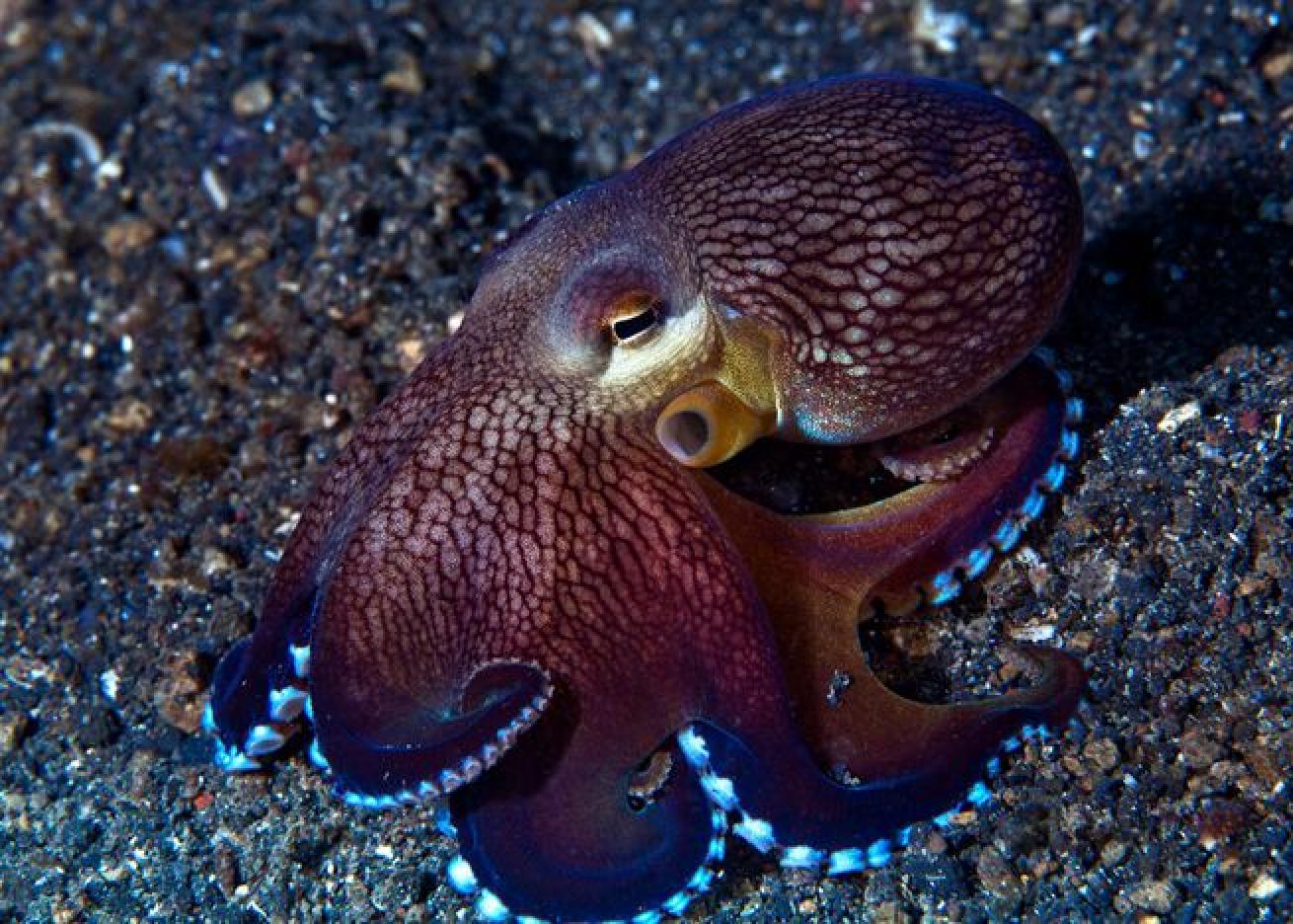
Shutterstock.com/CingularCoconut octopus showing its bioluminescence on sea floor in Lembeh Strait, Indonesia.
Certain species, like turtles, eels, shrimp, and some sharks, exhibit the phenomenon of natural biofluorescence, meaning they absorb dim light and reflect it as a brighter color that glows against a dark background. This is different from bioluminescence, which occurs when animals produce their own light.
Related Reading: Meet the 2024 Scuba Diving Magazine Photo Contest Judges
9. Blennies Hiding in Coral Holes
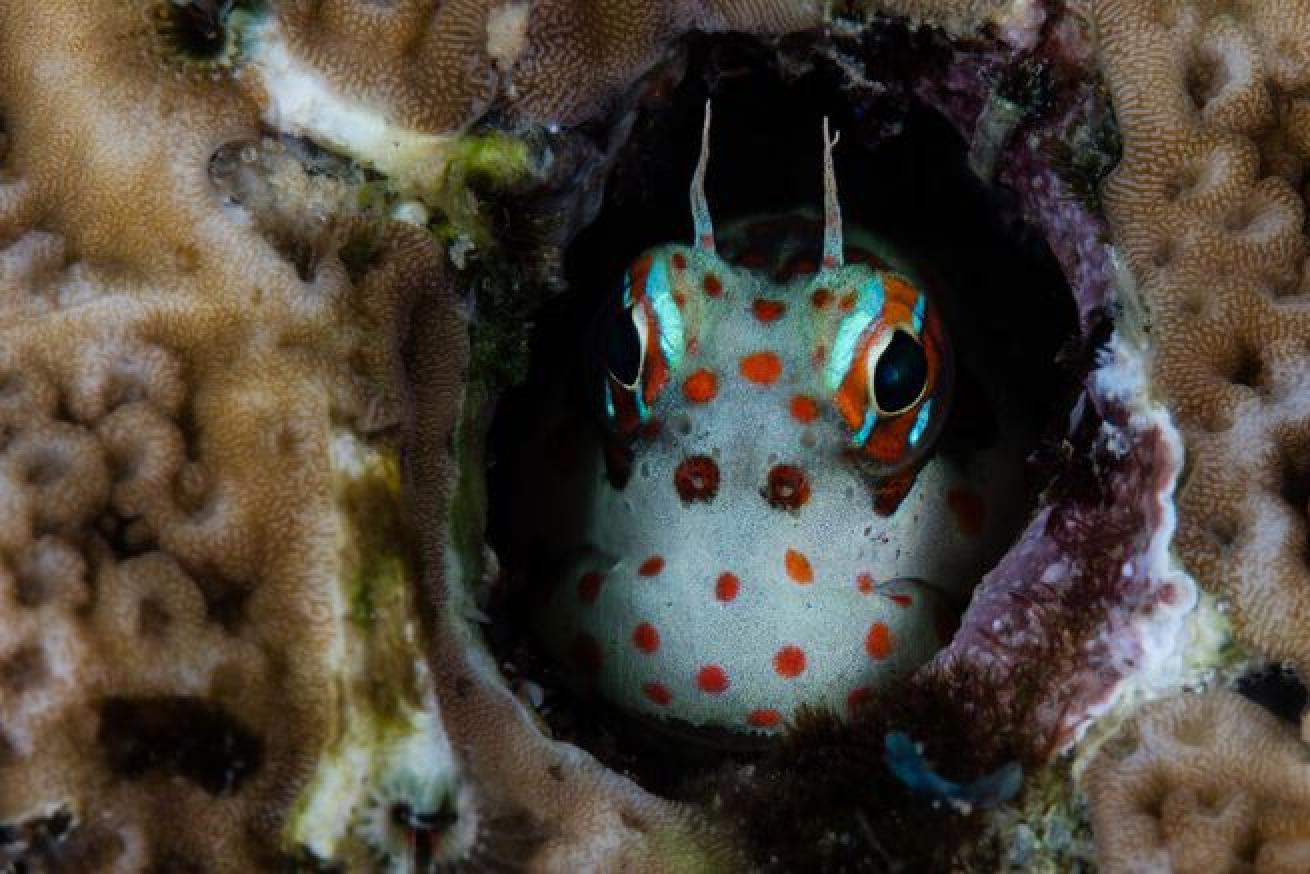
Shutterstock.com/Ethan DanielsA cute red-spotted blenny looks out from its protective home on a coral reef in Indonesia.
Blennies are shy species, choosing to spend most of their time in tiny crevices like abandoned wormholes that are formed in hard corals and rocks. They back into the holes to keep an eye on their surroundings, and they only leave for very short periods of time.
10. Sharks’ Tooth-Like Scales
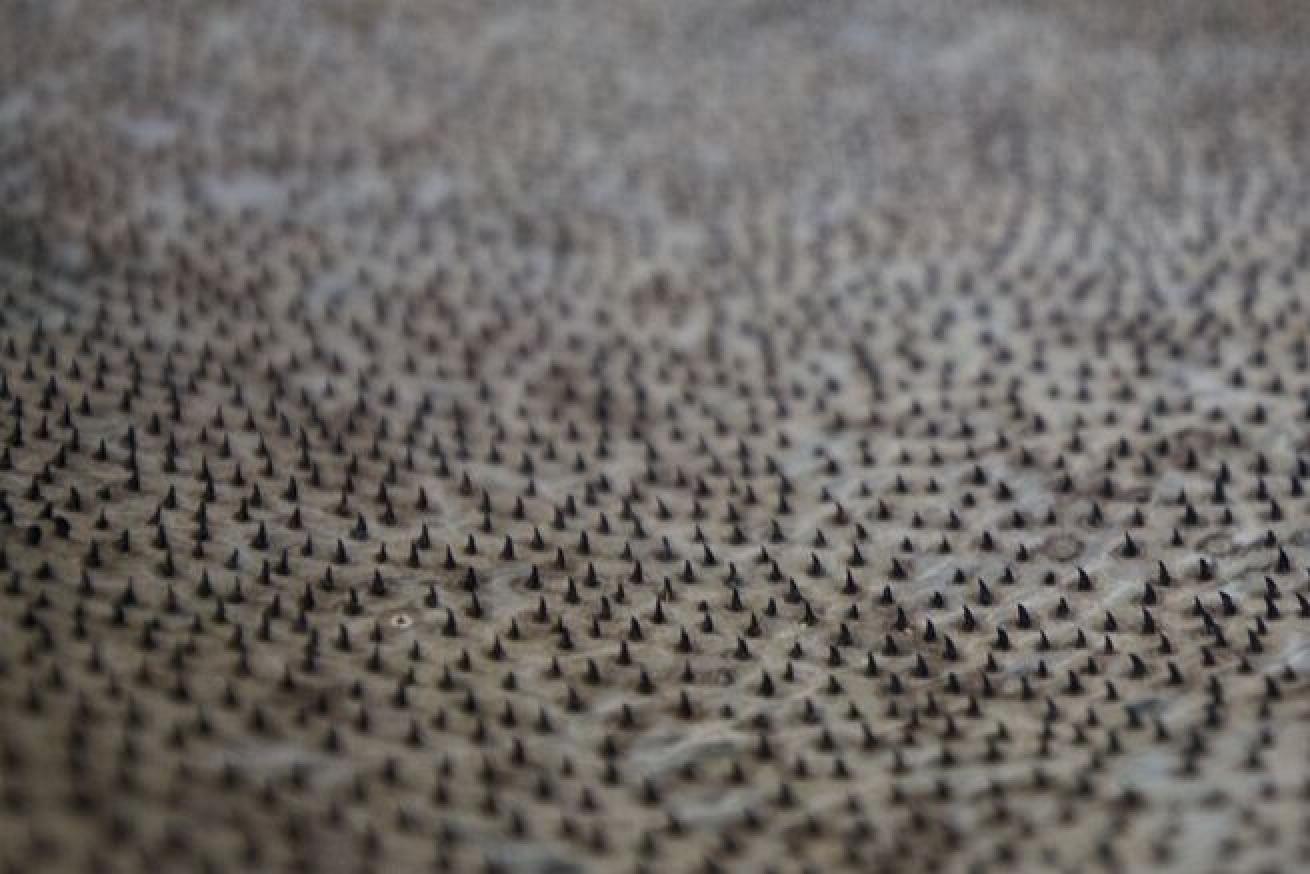
Shutterstock.com/Anzio ChouSpikes that resemble teeth on sharks skin.
Sharks’ skin is covered with small tooth-like scales called denticles. These “skin teeth” reduce drag, allowing the sharks to swim faster. They also help to ward off predators.
11. Mantis Shrimp Punching Prey
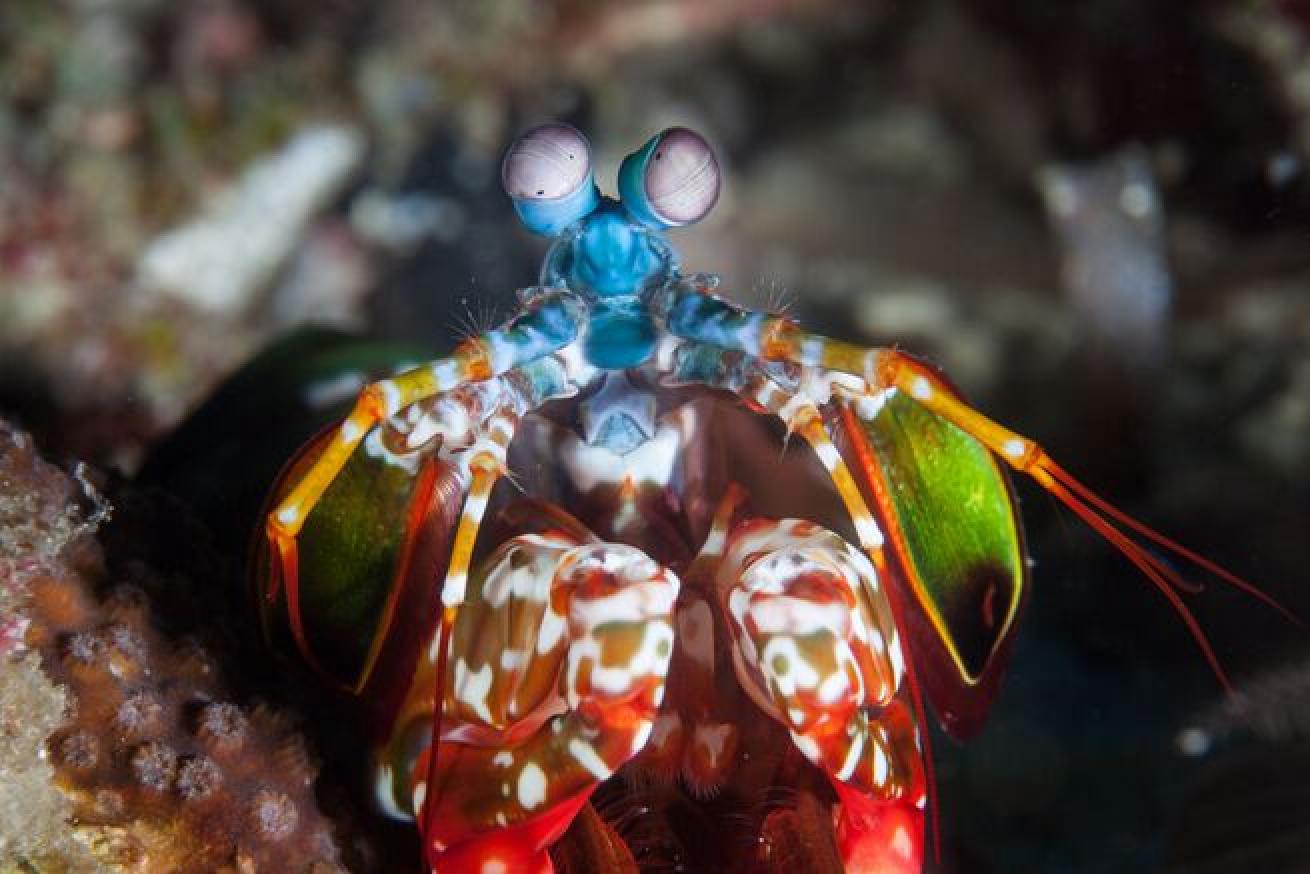
Shutterstock.com/Ethan DanielsA mantis shrimp lives on a coral reef in the Philippines. This type of crustacean has incredible eyesight and feeds mainly on mollusks which is smashes with its powerful claws.
Mantis shrimp have two appendages called dactyl clubs that they use to punch prey at up to 50 miles per hour, smashing their victims’ shells with the force of a .22-caliber bullet.

